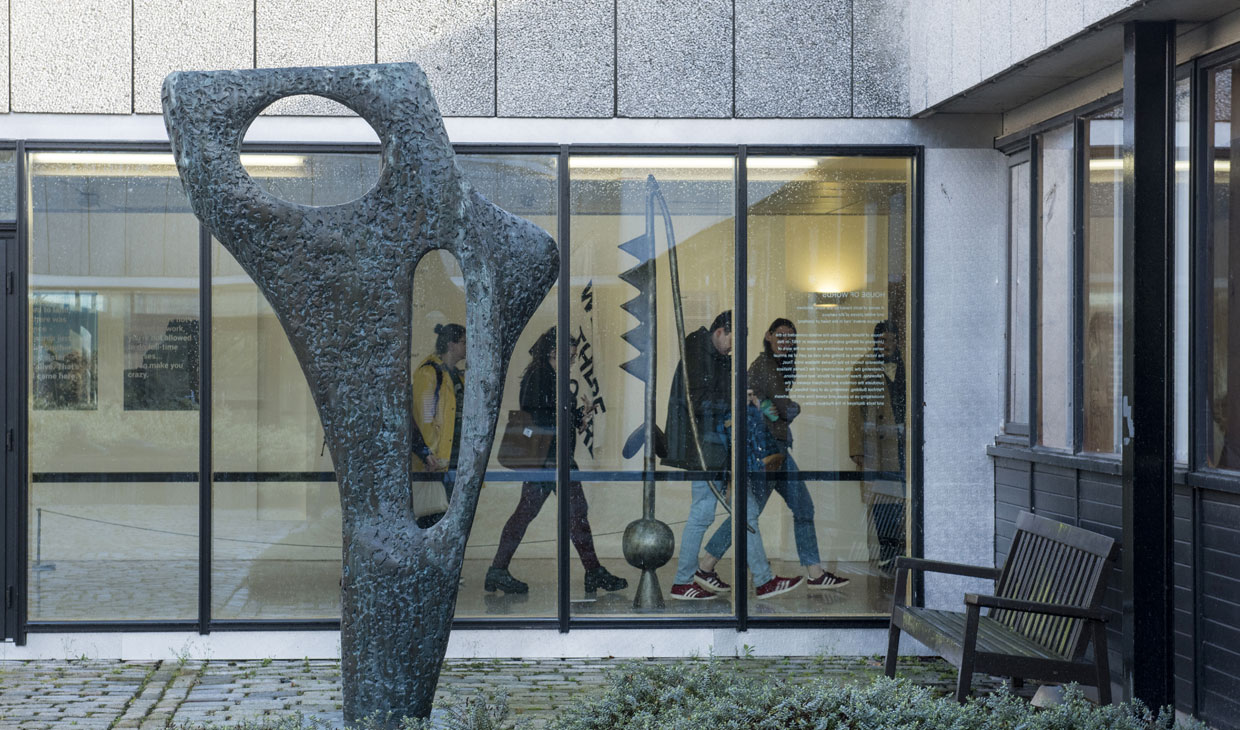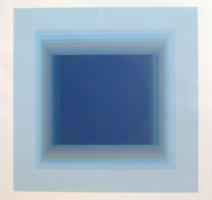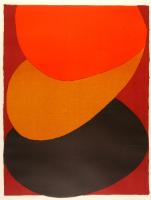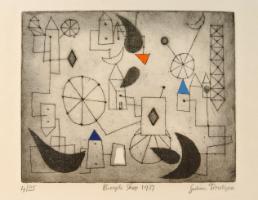The Art Collection holds several works created by artists associated with the Cornish coastal town of St Ives.
St Ives had already begun to flourish as an artist’s colony in the Nineteenth Century but then in the 1940s, due to the mix of characters and artists living and working there, it took on a particularly significant role in the development of modern art in Britain.
Scottish artist Margaret Mellis and her husband Adrian Stokes, an art critic, moved to St Ives at the outbreak of war in 1939. They soon drew other artists to the town, including Ben Nicolson, Barbara Hepworth and Naum Gabo who together established an international artist colony and outpost for the abstract avant-garde. Wilhelmina Barns-Graham arrived in St Ives in March 1940 on a travel grant from Edinburgh College of Art, unable to travel abroad due to the war. She too had been drawn there by Mellis, who was a college friend from her time at Edinburgh College of Art.

Figure (Archaean) by Barbara Hepworth (1959) can be seen in one of the Pathfoot courtyards. Image credit: Julie Howden.
Although Margaret Mellis left St Ives in 1946, Barns-Graham stayed on, maintaining a home and studio right up until her death in 2004. Once the war ended, Nicolson, Hepworth and Barns-Graham were joined by a new stream of artists, among them Paul Feiler, Terry Frost, Patrick Heron, Roger Hilton and John Wells, who were drawn to St Ives and settled there to live and create. Between them these artists had a decisive effect on the development of painting in Britain in the second half of the 20th century. As well as artists who took up permanent residency in the town, there were others who made short visits, such as Julian Trevelyan and Graham Sutherland.




